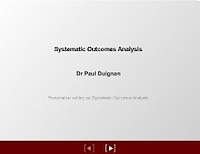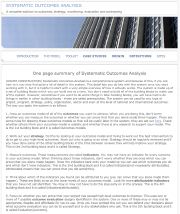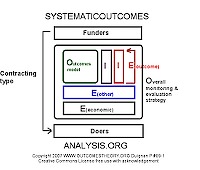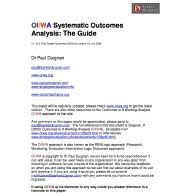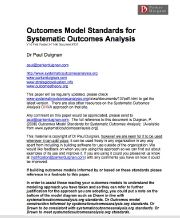A number of practical resources are available in the Systematic Outcomes Analysis toolkit to help you use the system in whatever setting you are working. These resources are set out below.
Introduction to Systematic Outcomes Analysis [Flash]
This presentation sets out the basic elements in Systematic Outcomes Analysis. It only takes 5 minutes to go through. It outlines the basic building blocks of outcomes systems on which Systematic Outcomes Analysis is build. The presentation is available here.
[If you do not have Flash Player download it here].
